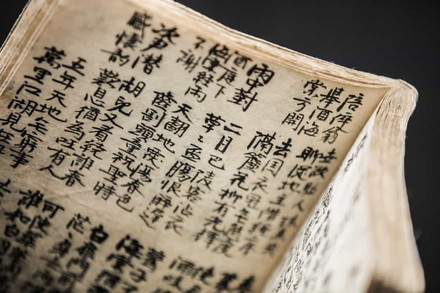UN CHINESE LANGUAGE DAY
- María Palomares Tarí

- Apr 20, 2021
- 2 min read
Deeply rooted in history and establish as an official language of the United Nations in 1946, the Chinese language stretches to the corners of the world and continues to fascinate people for its uniqueness and richness.
UN duty stations around the world celebrate six separate days, each dedicated to one of the Organization's six official languages. Today, as every April 20 since 2010, it’s UN Chinese Language day!
Along with the UN, at YOKO we want to pay tribute to this genuine language as a way to celebrate multilingualism and cultural diversity.
Let’s start with the basics!
Why April 20?
April 20 was chosen as the date to pay tribute to Cangjie, a mythical figure who claimed to be an official historian of the Yellow Emperor, and who is presumed to have invented Chinese characters about 5,000 years ago. The day was selected from Guyu ("Rain of Millet"), which is the 6th of 24 solar terms in the traditional East Asian calendars. Legend has it that he had four eyes and four pupils, and that when he invented the characters, the deities and ghosts cried, and the sky rained millet. From then on, Chinese people celebrate the day Guyu in honor of Cangjie. In the Gregorian calendar, it usually begins around April 20.
Let’s follow up with ten quick facts:
1. Chinese language has existed for over 3,000 years. It is one of the world’s oldest language!
2. Chinese, a Sino-Tibetan language, is the most used mother tongue on the planet with over 1.2 billion native speakers.
3. Mandarin is the most widely spoken Chinese dialect, followed by Wu (Shanghainese), Yue (Cantonese), Min, Xiang, Gan, Hakka and other dialects.
4. The vast majority of Mandarin speakers are found in mainland China and Taiwan, where it is the official language, as well as Singapore, where it is a co-official language.
5. Chinese calligraphy has long been appreciated as an art form through its history.
6. Chinese is written using characters called ideographs. There are approximately 50,000 characters found in the standard Chinese dictionary.
7. The majority of Chinese characters consist of two elements: a semantic, which indicates the meaning of the word, and a phonetic, which indicates the sound.
8. Mandarin is also spoken by groups in Brunei, Cambodia, Indonesia, Laos, Malaysia, Mauritius, Mongolia, Philippines, Russia, Thailand, United Kingdom, United States and Vietnam.
9. In early years, Chinese was not commonly used in the work of the United Nations. The situation was improved after restoration of the lawful rights of the People's Republic of China in the United Nations in 1971.
10. In 1973, the General Assembly included Chinese as a working language, which was followed by the Security Council in 1974. More and more UN offices and staff members work with Chinese language.
Happy Chinese Language Day from the YOKO team!








Comments